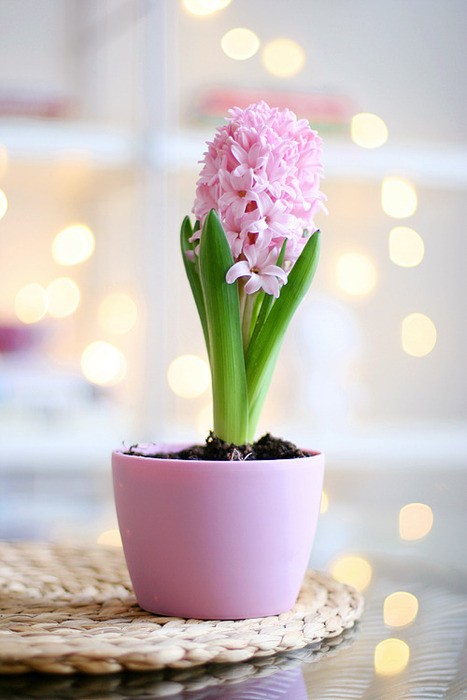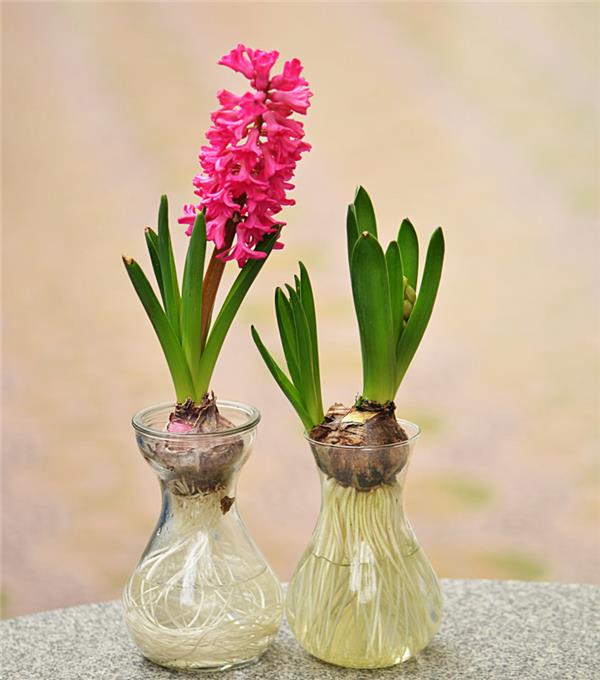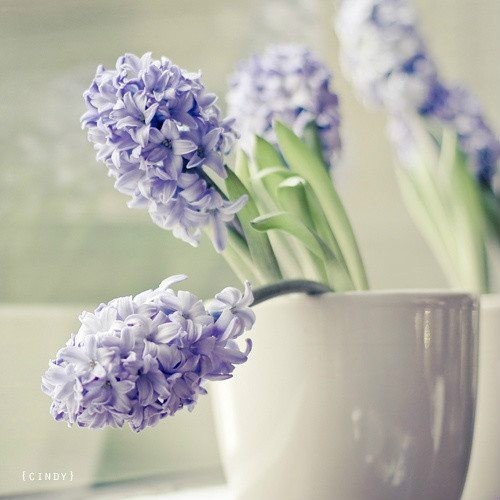Is hyacinth poisonous?
Some people say hyacinths are poisonous. Is that true? How can we be safer in breeding hyacinths? If you also like hyacinths, you may wish to take a look at the following content ~
Are hyacinths poisonous?
Hyacinth bulbs are toxic, if eaten by mistake, will cause dizziness, stomach cramps, diarrhea and other symptoms, so to prevent children or animals from eating by mistake. In addition, it is recommended not to breed in the bedroom, because the hyacinth flower fragrance may cause insomnia. However, as long as a little attention is paid to daily life, there is no danger, so there is no need to keep a respectful distance from hyacinth.

Origin of hyacinth
In Greek mythology, the beautiful boy Yasinthus (κιν θ) favored by Apollo (π λ λων) and accidentally killed by his discus was killed by Zephyrus, the wind god of the west wind. In the blood of Jacinthus grew a beautiful flower, which Apollo named after his youth-Hyacinthus orientalis.
Cultivation method of hyacinth cultivated in soil
Potted hyacinth likes warm and humid winter, cool and slightly dry summer, sunny or semi-cloudy environment. Like fertilizer, appropriate fertile, good drainage sandy loam, avoid too wet or sticky heavy soil. Hyacinth bulbs have the habit of dormancy in summer, rooting in autumn and winter, sprouting in early spring, flowering in March, and withering in early June. During the growth of hyacinth, the root system grows best at 2~6℃.
Water hyacinth seeds can be placed in December in a glass jar with a wide mouth and a small amount of charcoal added to help disinfect and preserve them. The seeds can be immersed only to the bottom of the ball, then placed in a dark place and covered with black cloth. After more than 20 days, the roots germinate in total darkness, and then they can be taken out to expose them to sunlight. At first, it will be illuminated for one or two hours a day, and then gradually increased to seven or eight hours. If the weather does not change much, it may bloom by the Spring Festival.

Hyacinth needs constant watering during its growth period. If it stays in the soil, the flower stems should be cut off after flowering to let the leaves wither naturally. Topdressing is needed every year. However, some varieties will have fewer and fewer flowers after planting for a few years. If you want to store them after flowering, you need to pull them out. After the leaves are naturally dried, cut off the leaves. It is best to put them in a breathable bag with sawdust and put them in a dry, ventilated and cool place.
Hyacinth only needs 5000Lx or more to maintain normal physiological activities. If the light is too weak, it will lead to thin plants, too long stems, small flower buds, early flowers, yellow leaves and other conditions, available incandescent light at about 1 meter; but too strong light will also cause leaves and petals to burn or flowering shortened.
Hyacinth culture also requires fertile soil, high organic matter content, good aggregate structure, pH 6~7 level; can be prepared according to the ratio of rotten leaf soil 5: garden soil 3: coarse sand 1.5: bone meal 0.5; before planting, can use formalin and other chemicals, in the soil temperature of 10~15℃, immediately after the application of the film on the soil surface, warm weather after 3 days, remove the film, air after 1 day to plant, keep the soil moist.

Hyacinth's Flower Language
Purple hyacinth: sad, jealous, melancholy love;
White hyacinth: quiet, quiet love;
Red hyacinth: Thank you, let me move love;
Blue hyacinth: perseverance, chastity, as if to see you happy;
Yellow hyacinth: happiness, happiness, very happy with you;
Pink hyacinth: admiration, romance.

I believe that after reading the above articles, you have a certain understanding of the related content of hyacinth poison. I hope the above content can explain to you. For more wonderful content, please continue to pay attention to our website.
Related
- Wuhan Hospital Iron Tree Blooming Result Was Instantly Frightened by the Gardener Master
- Which variety of camellia is the most fragrant and best? Which one do you like best?
- What is the small blue coat, the breeding methods and matters needing attention of the succulent plant
- Dormancy time and maintenance management of succulent plants during dormancy
- Minas succulent how to raise, Minas succulent plant pictures
- What are the varieties of winter succulent plants
- How to raise succulent plants in twelve rolls? let's take a look at some experience of breeding twelve rolls.
- Attention should be paid to water control for succulent plants during dormant period (winter and summer)
- Watering experience of twelve rolls of succulent plants
- Techniques for fertilizing succulent plants. An article will let you know how to fertilize succulent plants.



